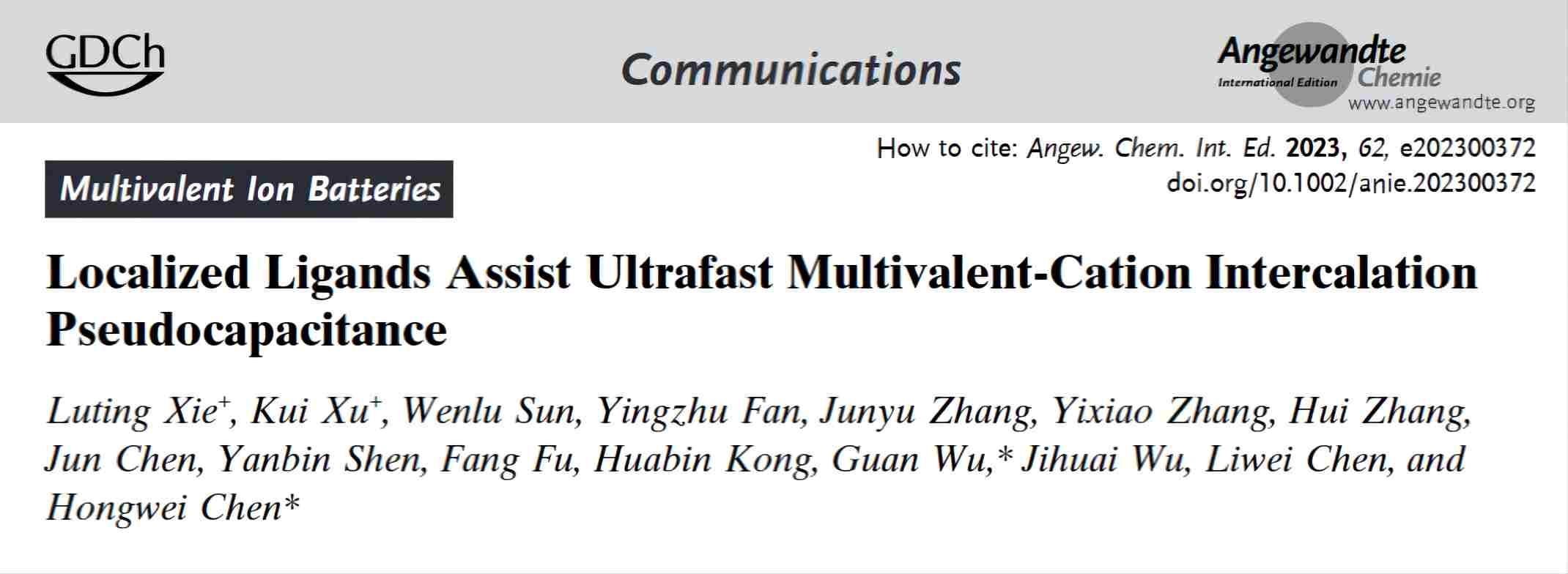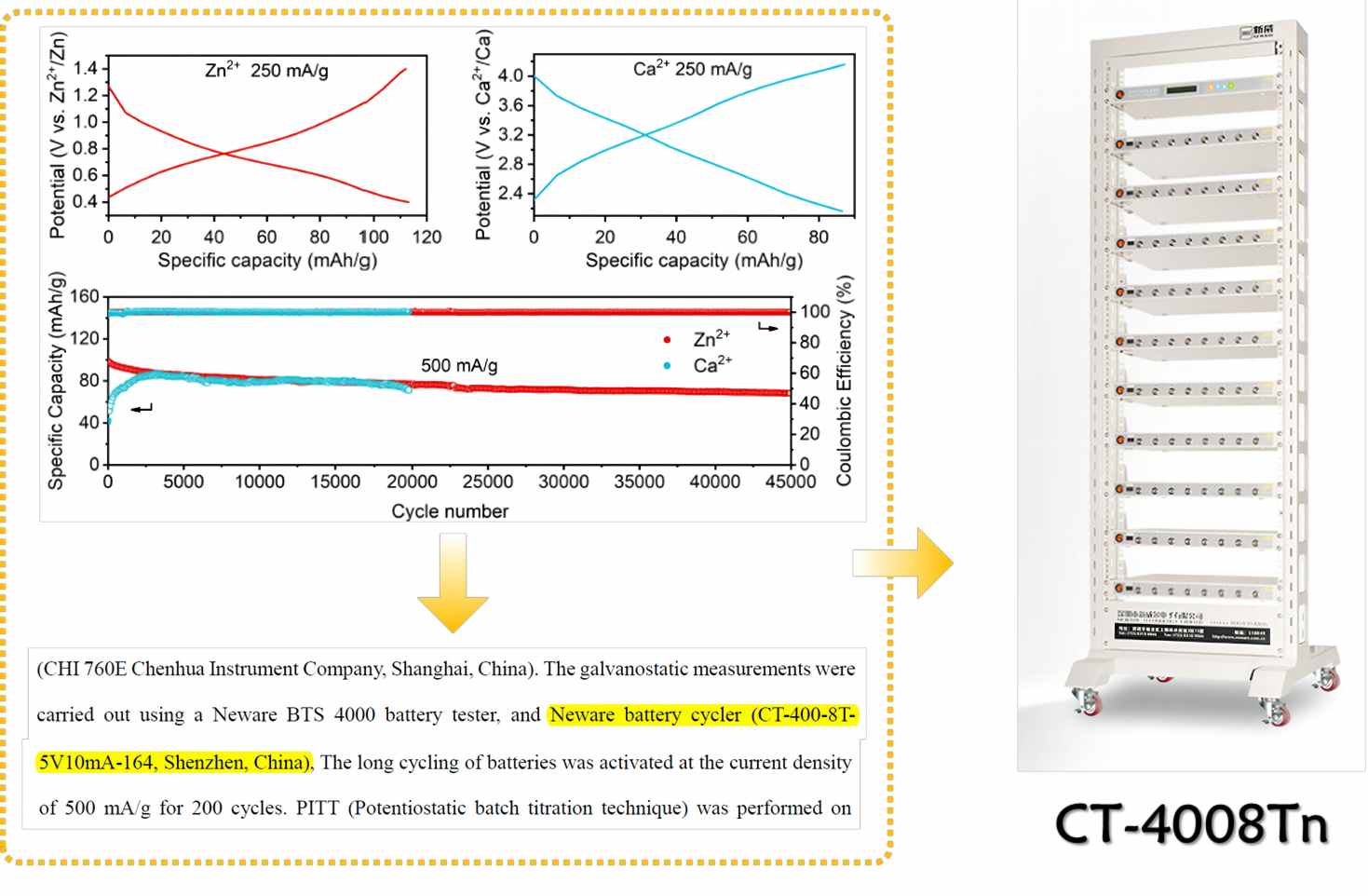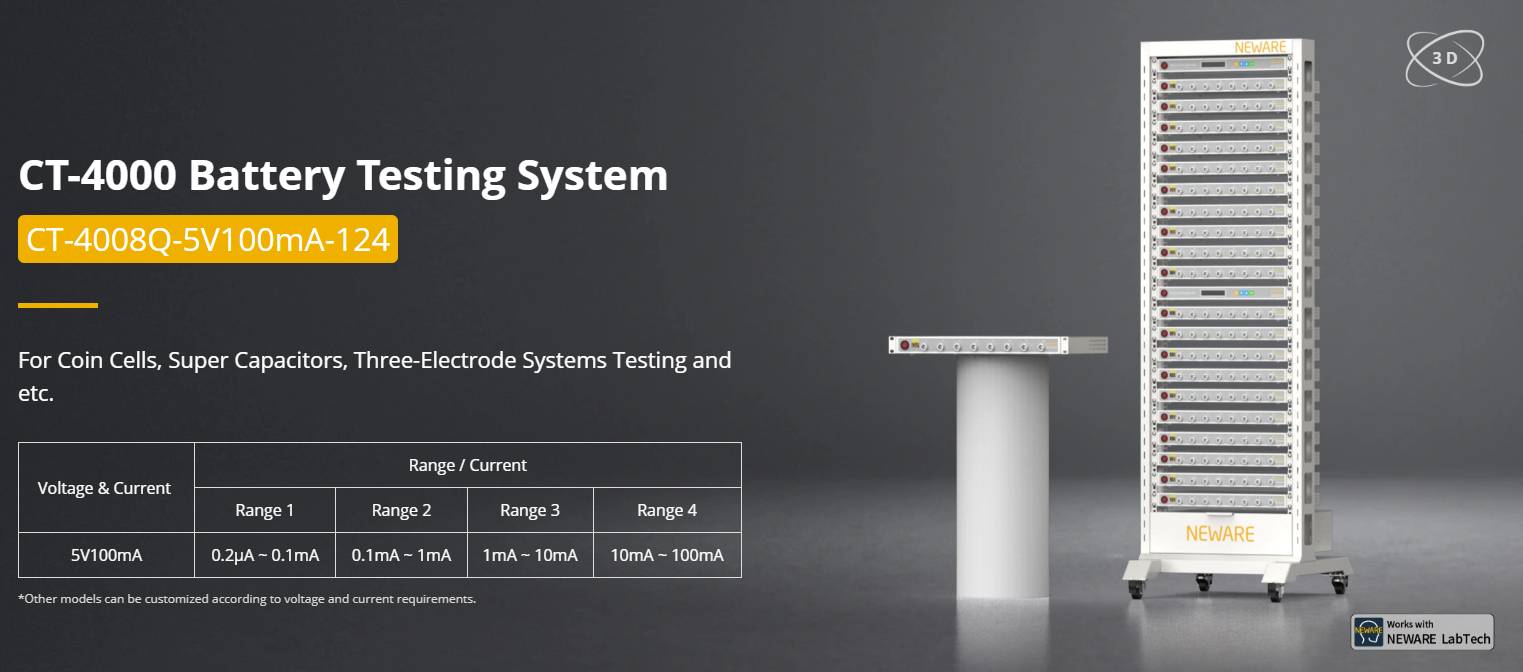Title of the paper: Localized Ligands Assist Ultrafast Multivalent-Cation Intercalation Pseudocapacitance
First author: Luting Xie (Huaqiao University)
Co-First author: Kui Xu (Nanjing Tech University)
Corresponding authors: Hongwei Chen (Huaqiao University), Guan Wu (Zhejiang Sci-Tech University)

Compared to traditional monovalent cation storage (M⁺, including Li⁺, Na⁺, K⁺, etc.), the storage of multivalent metal ions (Mv^(n+), n>1) involves multi-step electron transfer and can serve as charge carriers to build safer, cheaper, and higher-energy multivalent ion batteries. However, traditional electrode materials for storing Mv^(n+) generally need to meet multiple conditions simultaneously, including having a material framework with multi-electron redox centers and matching the coordination environment of Mv^(n+) with the active sites of the framework. Even if the electrode material meets the above conditions, the high charge density of Mv^(n+) limits its electrode kinetics. Moreover, the storage process of high charge density Mv^(n+) is often accompanied by irreversible phase changes in the electrode material, thus limiting the long cycle life of the electrode. Therefore, overcoming the limitations of traditional Mv^(n+) storage modes and achieving fast kinetics and long-life Mv^(n+) storage is a major challenge in the field of electrochemical energy storage.
Based on this, the team of Hongwei Chen from Huaqiao University and the team of Guan Wu from Zhejiang Sci-Tech University, among others, designed a type of organic framework cathode material for Mv^(n+) storage based on the intercalation pseudocapacitance mechanism. The basic mechanism is that the Mv^(n+) entering the framework can be shielded by localized anionic ligands, thus being stably stored near the surface of the framework material. This localized ligand promotes ultrafast intercalation capacitance behavior of multivalent metal ions in the organic framework, thus achieving fast and stable storage of Zn²⁺ and Ca²⁺. This organic framework material achieved reversible storage of Zn²⁺ for over 45,000 cycles and Ca²⁺ for over 20,000 cycles, with power densities reaching 14 and 57 kW/kg, respectively, and demonstrated stable long-cycle performance and excellent kinetic performance. This work was published in the international top journal Angewandte Chemie, with Luting Xie and Kui Xu as the co-first authors.
In this battery research, the authors used NEWARE's battery tester to test and record a series of data, primarily assisted by the NEWARE CT-4008Tn-5V10mA battery tester. This equipment features high testing accuracy, stable testing, and offers a variety of test ranges (5V10/20/50mA) to ensure battery testing is well-supported.

The NEWARE CT-4008Q-5V100mA-124 battery tester has expanded the test range up to 100mA, now offering four ranges: range1: 0.2uA-0.1mA, range2: 0.1mA-1mA, range3: 1mA-10mA, range4: 10mA-100mA. This broader range meets different testing needs. Stable performance parameters ensure accurate and reliable test data. At the same time, the product adopts a modular design with each unit having 8 channels, which can independently perform data acquisition and be programmed with a maximum of 254 editable lines. It meets the needs for cycle life test, rate charging/discharging test, pulse simulation test, GITT test, DCIR test. Tailored for advanced battery testing: enabling dQ/dV differential capacity curve analysis capability. Integrated peripheral devices such as Auxiliary Voltage, Auxiliary Temperature, and Environmental Test Chambers for comprehensive testing and evaluation, providing multi-dimensional and quantifiable support for battery mass production testing.

NEWARE is dedicated to providing support for global battery manufacturers, electric vehicle producers, energy storage battery manufacturers, and enterprises, national quality inspection departments, universities, and research institutions. If you have any battery testing needs, feel free to contact us. We offer customized battery testing solutions.




The lab focuses on solid-state battery research to overcome traditional lithium batteries' safety and energy density issues, supporting environmental sustainability. It develops innovative solid-state electrolytes, refines electrode materials, and investigates ion transfer and interface stability to revolutionize battery technology.

The electric vehicle battery industry is rapidly developing, focusing on technological innovation, market competition, and sustainability. Research hotspots include solid-state batteries, new types of electrolytes, BMS optimization, and recycling technologies. The environmental adaptability, safety, and economic viability of batteries are key research areas, and the industry is expected to undergo more innovation and transformation.

We specialize in battery preparation technology research, focusing on overcoming existing energy storage challenges by innovating in electrode materials, battery chemistry, and manufacturing processes to improve performance, enhance safety, and reduce costs. Sustainability and recycling technologies for batteries are also emphasized to mitigate environmental impacts and foster the growth of green energy.